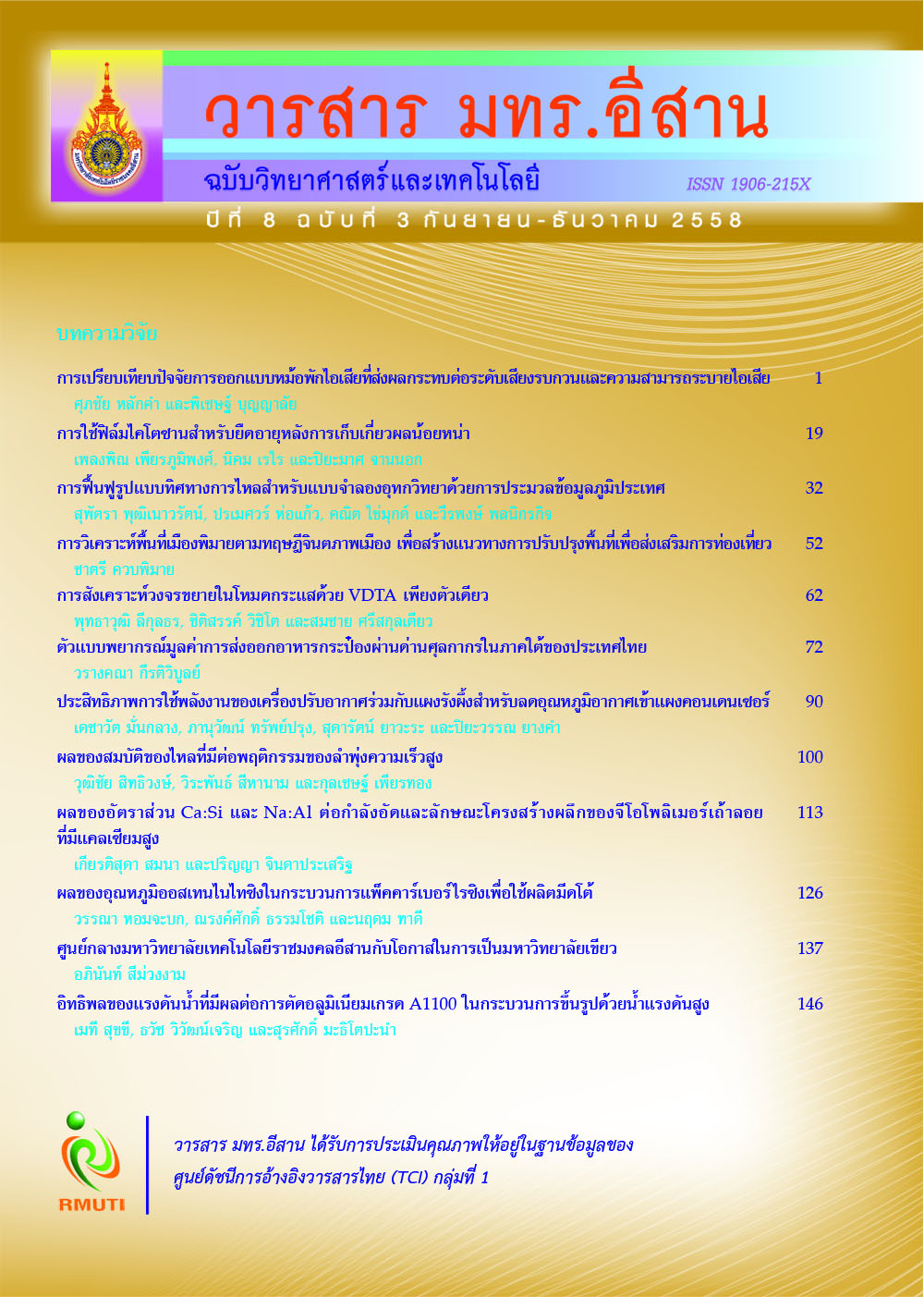ตัวแบบพยากรณ์มูลค่าการส่งออกอาหารกระป๋องผ่านด่านศุลกากรในภาคใต้ ของประเทศไทย Forecasting Model for the Export Values of Canned Food through Customs Department in Southern Thailand
Main Article Content
Abstract
บทคัดย่อ
วัตถุประสงค์ของการศึกษาครั้งนี้คือ การสร้างตัวแบบพยากรณ์ที่เหมาะสมกับอนุกรมเวลามูลค่าการส่งออก
อาหารกระป๋องผ่านด่านศุลกากรในภาคใต้ของประเทศไทย โดยใช้ข้อมูลจากเว็บไซต์ของธนาคาร
แห่งประเทศไทย ตั้งแต่เดือนมกราคม 2543 ถึงเดือนธันวาคม 2557 จำนวน 180 ค่า ซึ่งข้อมูลถูกแบ่ง
ออกเป็น 2 ชุด ข้อมูลชุดที่ 1 ตั้งแต่เดือนมกราคม 2543 ถึงเดือนมิถุนายน 2557 จำนวน 174 ค่า
สำหรับการสร้างตัวแบบพยากรณ์ด้วยวิธีบอกซ์-เจนกินส์ วิธีการปรับเรียบด้วยเส้นโค้งเลขชี้กำลังของ
วินเทอร์แบบคูณ และวิธีการแยกส่วนประกอบอนุกรมเวลา ข้อมูลชุดที่ 2 ตั้งแต่เดือนกรกฎาคมถึง
เดือนธันวาคม 2557 จำนวน 6 ค่า นำมาใช้สำหรับการเปรียบเทียบความแม่นของค่าพยากรณ์ โดยใช้
เกณฑ์เปอร์เซ็นต์ความคลาดเคลื่อนสัมบูรณ์เฉลี่ย และเกณฑ์รากที่สองของความคลาดเคลื่อนกำลังสองเฉลี่ย
ที่ตํ่าที่สุด ผลการศึกษาพบว่าจากวิธีการพยากรณ์ทั้งหมดที่ได้ศึกษา วิธีที่มีความแม่นมากที่สุด คือ วิธีการ
แยกส่วนประกอบอนุกรมเวลา ซึ่งมีตัวแบบพยากรณ์เป็น เมื่อ t = 175
แทนค่าเริ่มต้น คือ เดือนกรกฎาคม 2557 และ แทนค่าดัชนีฤดูกาล
Abstract
The objective of this study was to construct the appropriate forecasting model for
the export values of canned food through Customs Department in Southern Thailand.
The data gathered from the website of Bank of Thailand during January, 2000 to
December, 2014 of 180 values were used and divided into 2 sets. The first set had
174 values from January, 2000 to June, 2014 for constructing the forecasting models
by Box-Jenkins method, Winters’ multiplicative exponential smoothing method,
and decomposition method. The second set had 6 values from July to December, 2014
for comparing accuracy of the forecasts via the criteria of the lowest mean absolute
percentage error and root mean squared error. Research findings indicated that
for all forecasting methods that had been studied, the most accurate method was
decomposition method and the forecasting model was where
t = 175 was the starting value (July, 2014) and represented the seasonal index.
Article Details
References
department in southern Thailand. Access (1 March 2015). Avilable (http://
www2.bot.or.th/statistics/ReportPage.aspx?reportID=597&language=th)
Bowerman, B. L. and O’Connell, R. T. (1993). Forecasting and time series: An applied
approach. 3rd ed. California: Duxbury Press
Box, G. E. P., Jenkins, G. M. and Reinsel, G. C. (1994). Time series analysis: forecasting
andcontrol. 3rd ed. New Jersey: Prentice Hall
Keerativibool, W., Waewsak, J. and Kanjnasamranwong, P. (2011). Short-term forecast
of wind speed at chana district, Songkhla Province. Thailand. In Proceedings
of the 2011 International Conference on Alternative Energy in Developing
Countries and Emerging Economies. 25-28 May 2011. (AEDCEE2011). Hat Yai.
Songkhla. Thailand. pp. 343-350
Keerativibool, W. (2013). Forecasting model for the number of international tourist
arrivals to Thailand. Srinakharinwirot Science Journal. Vol. 29. No. 2. pp. 9-26
Keerativibool, W. (2014a). A comparison of forecasting methods between Box-Jenkins
and Holt’s exponential smoothing methods for predicting the retail prices
of hip meat. KKU Science Journal. Vol. 42. No. 3. pp. 532-543
Keerativibool, W. (2014b). Forecasting the export quantity of rubber compound.
Srinakharinwirot Science Journal. Vol. 30. No. 2. pp. 41-56
Ket-iam, S. (2005). Forecasting Technique. 2nd ed. Songkhla: Thaksin University
Sandate, Y., Chanbanyong, N. and Payakk, P. (2011). The study forecasting models of
export quantity of frozen shrimp. Srinakharinwirot University Journal of
Science and Technology. Special Issue 2. pp. 32-44
Sri Oran, W. (2010). Canned pineapple industry structure, trends and forecast value
of exports of canned pineapple. Research Report. Faculty of Economics.
Chiang Mai University.
Taesombut, S. (1996). Quantitative forecasting techniques. Bangkok: Physic Center


